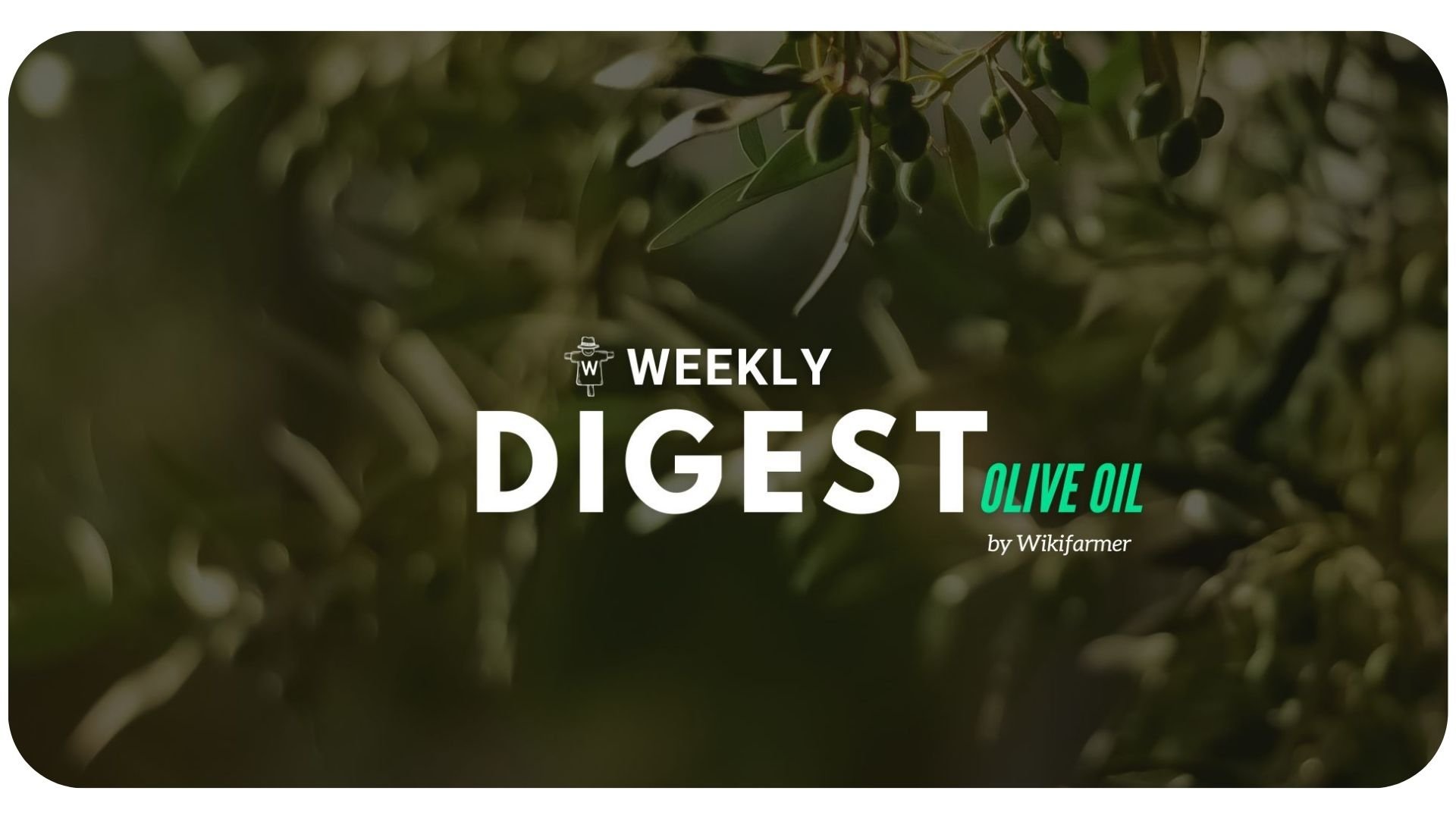Olive Oil Market Digest w40/2024

Weekly Olive Oil Market Updates
The olive oil market in Spain is currently experiencing general price stability with no notable fluctuations. The initial olive harvest has begun, albeit at modest levels. The European olive oil market is gearing up for this crop season following two particularly challenging years. Our experts have provided valuable insights regarding this week’s market activity, along with pricing data from the Union of Olive Oil-Producing Municipalities of Crete, PoolRed, and Ismea Mercati.
Olive Oil Market Overview in Spain and Europe: October 2024
On October 3rd, the Junta de Andalucía published the official report for the new crop forecast in Spain. For the upcoming 2024/2025 season, it is estimated that 5.3 million tons of olives for oil extraction will be produced, resulting in yields of 1.02 million tons of olive oil. This marks a 76.6% increase from the previous campaign and a 19.7% increase over the average production of the past five years. The province of Andalucía holds 1,653,063 hectares of olive groves, with only 5% allocated for table olive production. The region will contribute 445,000 tons of oil, reflecting a substantial increase of 116.1% from last year's production.
The report highlights that recent rainfall has significantly aided the growth of olive fruits, while mild temperatures during the flowering stage have contributed to fruit setting. However, disparities between rainfed and irrigated olive groves have been noted, particularly as Andalucía faced water challenges during the summer, with levels reaching only 29% of capacity. As our experts highlight, producers are cautious about early harvesting, especially for rainfed trees, as they rely on the oil reserves in the olive fruits while hoping for additional rain to improve conditions.-png.png?width=758&height=1271&name=okfT2-reservoired-water-in-spain-3-october-2024%20(1)-png.png)
In the organic segment, olive oil production is projected to reach 29,230 tons, a 48.8% increase compared to the 2023/2024 campaign. Córdoba leads the way at 15,760 tons, accounting for 53.9% of Andalucía's total organic olive oil production.
As of September 30, 2024, estimated olive oil stocks in Spain stand at 176,000 tons, a decrease from 248,200 tons at the start of the previous campaign, reflecting a 29.1% decline.
Consumption trends
Regarding consumption, vegetable oils and fats showed a downward trend, reaching 456,471 tons nationwide in 2023. Olive oils represent 62.8% of total oil consumption in Spain, yet their consumption has decreased by 33.5% over the last decade, totaling 286,462 tons (valued at €1.749 billion) in 2023. In Andalucía, per capita consumption of olive oil is 6.2 kg. Additionally, the national per capita extra virgin olive oil consumption has fallen by 6.8% in the past ten years, totaling 108,681 tons consumed in 2023. However, in Andalucía, per capita consumption is significantly higher than the national average, increasing by 9% over the last decade.
Trade and price dynamics
Andalucía continues to lead olive oil exports, accounting for 68.5% of the total national volume. By July, the region had exported 429,755 tons of olive oil, valued at €3.438 billion, which constituted 74% of the campaign's production. In the same period, Andalucía imported 155,078 tons of olive oil, worth €995 million, equivalent to 26.8% of the region's production.
By July of the 2023/2024 campaign, olive oil exports from Andalucía reached 127 countries, with the United States being the main destination, receiving 18% of the total olive oil exported, followed by Italy (17%), France (13%), and Portugal (11%).
The 2023/2024 campaign saw a significant price rise, with a weighted average value of extra virgin olive oil at €8.43/kg, compared to €5.87/kg in the 2022/2023 campaign. By September 2024, the average price of extra virgin olive oil reached €7.46/kg, 11.4% lower than the previous year.

Moreover, packers are purchasing any available olive oil, as the supply meeting panel test standards is nearly depleted. The Spanish government has also adjusted the VAT on olive oil, raising it from 0% to 2% until the end of the year, with a plan to implement a permanent reduced rate of 4% starting in 2025.
In Italy, buying activity remains intense, reflecting similar trends in Spain. Following Spain's lead, Greece also maintains stable prices, but quality olive oils are becoming increasingly scarce, falling the threshold of 50.000 tons. Optimism for a better harvest this year is fueled by September's rains, which have boosted fruit development and oil concentration.


Olive Oil Outlook 2024: A mixed harvest across Europe and beyond
Experts from olive oil-producing countries around the Mediterranean have provided insights into the upcoming olive oil campaign, outlining the challenges and expectations for each region.
Italian olive oil production faces challenges, with drought and heat severely impacting production, especially in Puglia and Sicily, leading to an expected output of around 224,000 tons. However, northern and central Italy anticipate a 70% increase in production, projecting at least 240,000 tons of virgin and extra virgin olive oil. While overall quantities are lower, the quality is expected to be high, with prices currently double those from two years ago.
In Greece, olive oil production is estimated at approximately 250,000 tons, with some regions reporting increases. Early harvesting may occur due to rising market prices, although additional high temperatures could negatively affect yields. Tunisia is anticipating a great harvest of 280,000 to 320,000 tons, thanks to beneficial rainfall and a lack of significant pathogens, while Morocco is seeing a decline for the third consecutive year, with estimates between 60,000 and 80,000 tons due to extreme temperatures.
Turkey expects a good olive oil harvest of around 350,000 to 360,000 tons, despite some drought impacts. Lastly, Portugal anticipates production exceeding last year’s levels, estimated between 170,000 and 200,000 tons, with mills starting operations next week. Favorable weather conditions have benefitted the younger trees, with older groves show varied results.
.png?width=450&height=87&name=New%20Logo%20(1).png)

